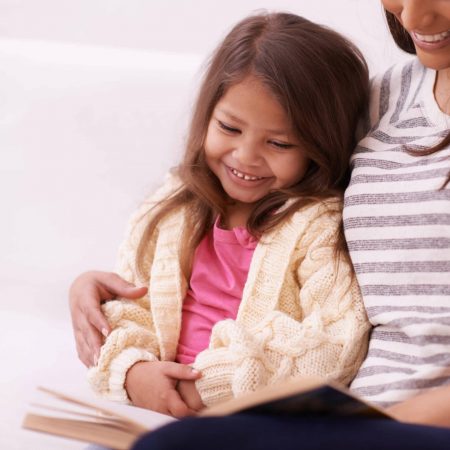Comprehension is gaining meaning from what you read. This is a complex higher-level thinking skill, but children from a very early age can begin thinking about what they have just read and tell you what a story is about. When children read, they must turn their “minds on” and actively think about the meaning of what they are reading.

The goal for Kindergartners is to understand the book they read and the books that are read to them. Children show their understanding by telling you about the characters, setting and important events from the story. If the book is nonfiction, they can retell you the important facts from the book. Students can answer questions about what they read or heard and even act out a story.


Reading at home for enjoyment is the best and easiest daily routine you can do to help strengthen your child’s understanding of stories. Asking simple questions about the characters and talking about best parts of a book get your child thinking about the story and making connections to their own life.
Conversations about books should be fun. Quizzing a child for correct answers after reading their favorite book can suck the joy out of the reading experience. Instead, try to ask questions from a place of curiosity and wanting to know what your child thinks. This makes them feel that their opinions and thoughts have value.
After reading a story, use your hand to help you remember the most important elements of the story. This technique can be used for people ages 4 to 94!
CLICK HERE FOR THE FIVE FINGER RETELL PRINTABLE
When reading with your child, a great technique is to pause after a few pages and check in to see if your child is truly grasping what they are reading. Asking open-ended questions allows them to explain their thinking. If what they tell you does not match the story, you can help redirect them back on track:
You say, “Did you see the wolf dressed up in the grandmother’s clothing? Why is the wolf doing this?”
Your child says, “I don’t know….Maybe the wolf likes dressing up.”
You say, “Do you see the wolf licking his lips and drooling? What does it mean when you see our dog doing that? Do you think the wolf is hungry? What might the wolf be trying to do?”
Allow your child enough undisturbed “think time” to process what is happening. If you ask a question about the story, let them look at the pages and take a few moments to think, at least 3 seconds. We typically only wait one second before jumping in with the answer. Providing answers too quickly takes away a child’s “thinking time”, robbing them of the opportunity to form conclusions on their own.
Books are the best way to expose children to new vocabulary, stories and higher-level thinking skills. But reading on their own is not the only way for children to access stories. Read alouds and audio books offer the same benefits and let children enjoy a great book. The NC Kids Digital Library offers hundreds of picture read alouds that let your child hear stories and build their pre-reading skills.

The best way to build your comprehension skills is by using books or magazines and asking questions to get your child thinking about what they just read. It doesn’t have to be complicated. A simple “What happened to that character?” or “What was that story about?” are great questions.
Worksheets can feel like meaningless “work” and may take away your child’s enthusiasm for reading. For this age, worksheets do not need to be completed in order to build excellent comprehension skills.
If you choose to use them during breaks from school or if your child shows interest in them, try to make it a fun and light activity. Pretend like you’re on a game show and your child is earning points for a special prize at the end (You win 10 more minutes of free time after your bath!)
Kindergarten Reading Comprehension passages and questions
These passages are well suited for end of Kindergarten or first grade. Parents can read the sentences aloud or read them together with their child.

Reading books online, interactively, feels just like playing a fun computer game and helps your child build their reading comprehension skills.
NC Kids Digital Library (Free, requires library card number)
Go to “Collections” and select “Read Alongs” to choose from hundreds of picture books that will read aloud as your child follows along in the story.
Libby, by Overdrive (Free app for iPhones and iPads, Google Play, or Windows Mobile)
This app can be used on your phone or tablet to access the NC Kids Digital Library read along books for free.

Home Reading Helper is a resource for parents to elevate children’s reading at home provided by Read Charlotte.